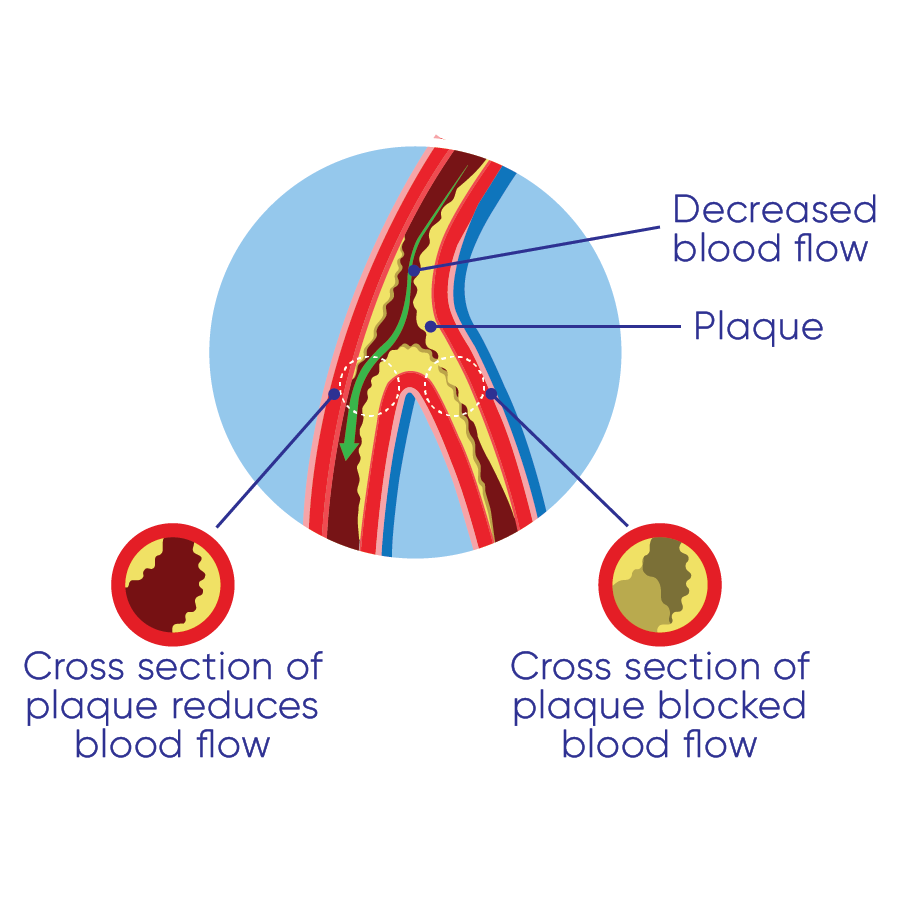

LifeCare Diagnostic Medical Centre
01 September, 2022
Peripheral Artery Disease (PAD)

A common condition in which narrowed arteries reduce blood flow to the arms or legs. The legs or arms (usually the legs), don’t receive enough blood flow to keep up with the demand, causing leg pain when walking and other symptoms. PAD also increases the risk of heart attack and stroke.

Symptoms of PAD
Most people with PAD usually experience mild or no symptoms. Symptoms like leg pain, muscle pain, and cramps in the legs or arms during walks or at the beginning of any physical activity and end with rest (claudication). The pain is usually felt in the calf and ranges from mild to severe. If PAD worsens, pain may occur even during rest or lying down and cause interference during sleep.
Other PAD symptoms may include:
Slower growth of toenails
Hair loss or slower hair growth on the legs
Sores on the toes, feet or legs that won’t heal
Erectile dysfunction
Erectile dysfunction
Sores on the toes, feet or legs that won’t heal
Causes of PAD
Causes of PAD
Risk Factors of PAD
Risk Factors of PAD
Diagnosis
Apart from blood tests, ultrasound of legs or feet and angiography, one of the common tests used to diagnose PAD is the Ankle-brachial index (ABI).
Ankle-Brachial Index (ABI)
A quick and non-invasive way to check for PAD. The test is painless and similar to having blood pressure taken in a routine medical visit. It compares the blood pressure in the ankle with the blood pressure in the arm.
During the procedure
- You will be asked to rest for 5 minutes before the test.
- You are required to lie on a table on your back. Our health personnel will place the inflatable cuffs on both of your arms and ankles. The cuffs will measure your blood pressure in both arms and ankles via the ABI machine.
After the procedure
- The ankle-brachial index test takes only about 5 minutes. No special precautions are needed afterward. Our Health Screening Doctor will discuss your test result with you.
Result – The blood pressure measurements from the arms and ankles are used to determine the ankle-brachial index. The index is a ratio of the two measurements.
Reading & Description
Reading
Description
1.0 to 1.4
No blockage. You probably don’t have PAD but if you have symptoms of PAD, you might have an exercise ankle-brachial index test.
0.90 to 0.99
Borderline blockage. Reading indicates borderline PAD. You might have an exercise ankle-brachial index test.
less than 0.90
Severe blockage (PAD) This range indicates a diagnosis of PAD. You might have more testing, such as ultrasound or angiography, to view the arteries in your legs.
Health Screening Packages
Get the Ankle-Brachial Index (ABI) Test done with the purchase of selected premium health screening packages (Platinum and above only) listed below:



